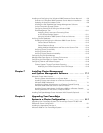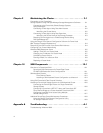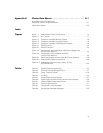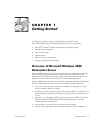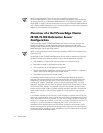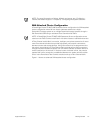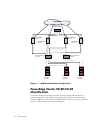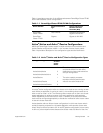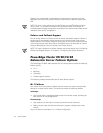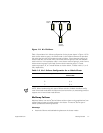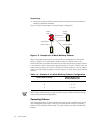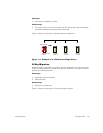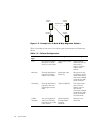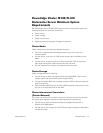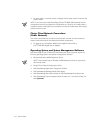
support.dell.com Getting Started 1-5
Table 1-1 provides an overview of the differences between PowerEdge Cluster FE100
and FL100 Datacenter Server configurations.
Active
n
/Active and Active
n
/Passive Configurations
MSCS and PowerEdge Clusters support multiple variations of Active
n
/Active and
Active
n
/Passive configurations (where n = the number of active cluster nodes).
Table 1-2 provides a description of the configuration types and their definitions.
An active
n
/active configuration refers to a cluster with virtual servers running on each
node. When an application is running on node 1, the remaining cluster nodes do not
have to wait for node 1 to fail. The remaining cluster nodes can run their own cluster-
aware applications (or another instance of the same application) while providing
failover capabilities for the resources on node 1. However, an active
n
/active cluster
node must be configured appropriately to handle the workload of other cluster nodes
in case one cluster node fails.
Active
n
/passive refers to failover cluster configurations in which one cluster node is
actively processing requests for a clustered application while another cluster node
simply waits for the active node to fail. An active
n
/passive configuration is more costly
in terms of price and performance because one cluster node sits idle all of the time.
Table 1-1. PowerEdge Cluster FE100/FL100 Configurations
Cluster Solution Cluster Interconnect
Type
Cluster Interconnect
Network Interface
Controller (NIC)
PowerEdge
Cluster FE100
Fast Ethernet Broadcom NetExtreme
Gigabit Ethernet NIC
PowerEdge
Cluster FL100
Giganet Giganet cLAN 1000
Table 1-2. Active
n
/Active and Active
n
/Passive Configuration Types
Configuration Type Number
of Active
Cluster
Nodes
Definition
Active/Active
Active/Active/Active
Active/Active/Active/Active
2
3
4
The active node(s) process requests
and provide failover for each other,
depending on cluster node resources
and your configuration.
Active/Passive
Active/Active/Passive
Active/Active/Active/Passive
1
2
3
The active node(s) processes
requests while the passive node
waits for the active node to fail.



